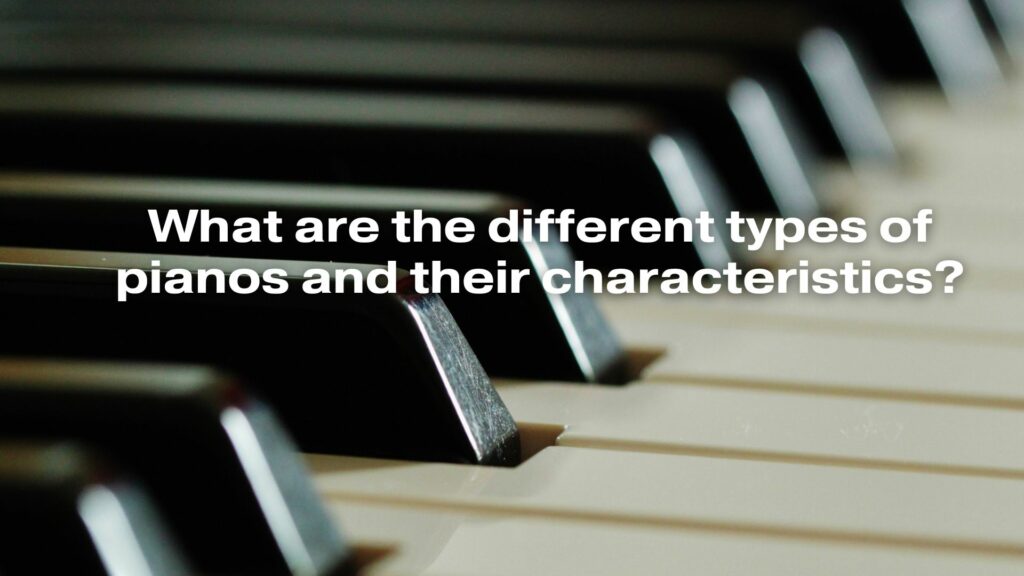Pianos come in various types, each with its own unique characteristics, design, and purpose. Here are the main types of pianos and their distinguishing features:
1. Grand Pianos:
- Grand pianos are known for their iconic, horizontal design with the soundboard and strings running horizontally. They are available in several sizes, from baby grands to concert grands.
- Grand pianos are favored for their full, rich sound, responsive action, and dynamic range. They are often used in concert halls and by professional pianists.
- Baby grand pianos are smaller and more space-efficient, making them suitable for homes.
2. Upright Pianos:
- Upright pianos, also known as vertical pianos, have a tall, vertical cabinet. They are designed to save space while offering a full 88-key keyboard.
- Uprights come in different sizes, from spinets to full-sized uprights. Larger uprights often have a more robust sound.
- They are commonly used in homes, schools, and smaller performance venues.
3. Digital Pianos:
- Digital pianos use electronic technology to reproduce the sound and feel of an acoustic piano. They are available in various styles, including stage pianos, console pianos, and portable keyboards.
- Digital pianos offer versatility, portability, and the ability to change sounds, use headphones, and connect to other devices.
- They are ideal for musicians who need a range of sounds, practice features, and recording capabilities.
4. Hybrid Pianos:
- Hybrid pianos combine acoustic and digital elements. They have a traditional piano keyboard and action but utilize digital sound technology.
- Hybrid pianos offer the touch and feel of an acoustic piano with the flexibility of digital features, making them suitable for modern pianists.
5. Square Pianos:
- Square pianos were popular in the 18th and 19th centuries. They have a square-shaped cabinet and horizontal strings.
- They are known for their historical significance but are not commonly used today due to their limited tonal quality and outdated design.
6. Player Pianos:
- Player pianos have a built-in mechanism that plays music rolls automatically. They were popular in the early 20th century.
- Player pianos are rare today but hold historical value and are sometimes used for their unique character.
7. Harpsichords:
- Harpsichords are keyboard instruments that produce sound by plucking strings with quills. They have a distinctive, bright tone.
- While not a type of piano, harpsichords were predecessors to the modern piano and are used in early music and historical performances.
8. Electric Pianos:
- Electric pianos, such as the Rhodes and Wurlitzer, use electronic amplification to create their sound. They are often used in pop and jazz music.
- Electric pianos have a distinct, warm tone and are known for their portability and vintage appeal.
9. Silent Pianos:
- Silent pianos are acoustic pianos equipped with a digital interface that allows the player to switch between acoustic and digital sound. They are ideal for practicing quietly with headphones.
Each type of piano has its own unique characteristics and serves specific musical needs and preferences. The choice of a piano type depends on factors like the player’s skill level, musical genre, available space, and desired sound quality.


